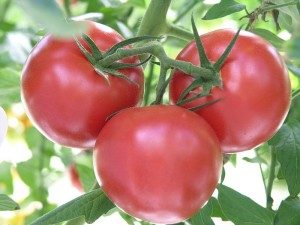Tomato Post-Harvest Losses is one of myriad post-harvest problems Nigerians farmers have been living with for time immemorial. Yams in Benue and the middle belt rot away after harvesting because there is no storage facility. The tubers come out at the same time of the year, glut the market and then rot away when buyers have bought their need.
You would want to ask why the government is not doing anything about this. What are the egg heads in our university doing about researching viable storage methods
Let us remember that post harvest loss is not limited to yam alone, it also affects pther perishable crops and fruits such as tomato, apple, cashew, oranges, mangoes and so on. This colossal loss might be the reason why global leaders are addressing the issue as it affects tomato this year.
Forty-five Nigerians and global business leaders in the country’s agriculture industry met last week in Lagos, to find market-led solutions to the post-harvest losses in the country’s tomato value chain.
Nigeria is Africa’s second largest producer of tomatoes, producing nearly 2 million tonnes annually, yet up to 40 per cent of the crop never makes it to market, impacting food security and smallholder farmers’ incomes.
Get more profitable business ideas from here
This prompted the workshop, organised by the Initiative for Global Development (IGD), in partnership with Rockefeller Foundation’s Yield wise initiative, the workshop, “Making Markets Work: A Private Sector Workshop On Reducing Postharvest Loss and Unlocking Potential In The Nigerian Tomato Value Chain,” held on November 1 and 2, sought to lay the foundation for stronger partnerships between companies to catalyse effective collaboration to achieve value chain efficiencies and address gaps and bottlenecks and prevent Tomato Post-Harvest Losses.
“IGD partnered with the Rockefeller Foundation’s YieldWise initiative for this action-focused workshop to bring together African private sector perspectives to find innovative and practical solutions to minimise crop losses and to build an efficient, productive food chain,” said Helen Mant, IGD Senior Advisor.
Mant leads IGD’s participation in the Yieldwise initiative to promote private sector engagement and identify market-led approaches to reducing post-harvest loss in targeted value chains.
By convening key value chain actors, workshop participants recognised the need for stronger business linkages and cross-sector partnerships and alliances across Nigeria’s tomato industry to cut post-harvest losses.
Market-led solutions put forward by participants would involve connecting aggregated smallholder farmers to structured market demand, unlocking access to PHL-reducing technologies and finance, and influencing key actors to prioritise investments in loss prevention.
Business leaders at the workshop stressed the importance of building an integrated value chain in the tomato industry, noting that to date, most stakeholders in the value chain have been working in silos rather than collaboratively.
Mira Mehta, founder and CEO of Tomato Jos, who agreed with this, emphasised that smallholder farmers and processors must work together to meet local market demands and scale the local tomato industry.
“It will take two to three years to get smallholder farmers ready to go and then also to get the processing facilities prepared to produce on the scale that is needed to meet demand in Nigeria. We need to be doing the work to get the system in place in the meantime,” said Mehta.
Other key topics discussed at the workshop were; expanding access to high quality seeds and other inputs for smallholder farmers to achieve higher yields; bio-safety, standards and certifications; and greater access to finance and financial incentives for smallholders.
Get more profitable business ideas from here
During a “shark tank” style session, eight participants shared solutions to address challenges in the value chain, including railway transport, cold chain solutions, solar water pumping supporting the war against tomato post-harvest losses.
